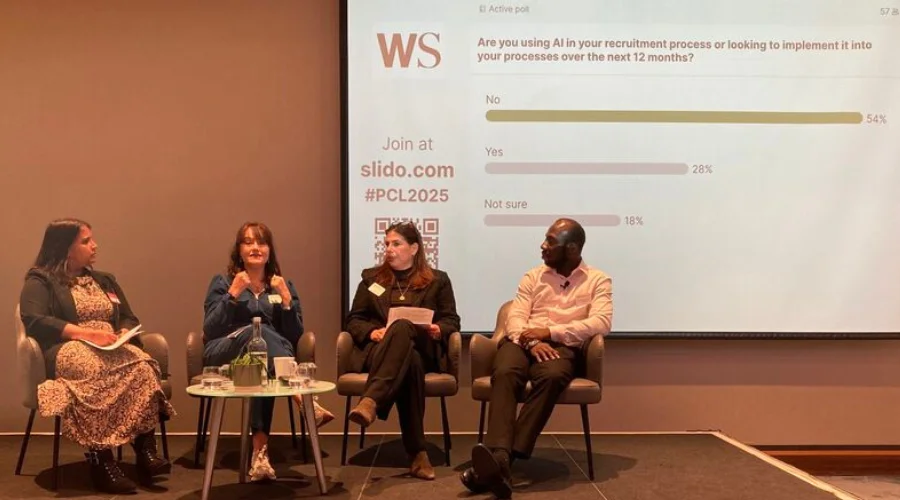
Quick CV Dropoff
Want to hear about the latest non-profit and public sector opportunities as soon as they become available? Upload your CV below and a member of our team will be in touch.

Quite rightly, discussions around diversity and inclusion have moved to the top of the agenda for many charity leaders. It is therefore likely that you will be asking yourself challenging questions – are you doing enough to ensure that your board/organisation is diverse and inclusive, what more could you be doing, or even, where do I start?
Some context to this and some shocking statistics. The charity Getting on Board states that:
You would think that the non-profit sector would be leading the way in terms of diversity at board level, but unfortunately this isn’t the case.
It’s well researched that having diverse and inclusive teams is crucial to the success of your organisation. In the McKinsey’s study – Diversity Matters, they found that Companies in the top quartile for racial and ethnic diversity are 35 percent more likely to have financial returns above their respective national industry medians and that Companies in the top quartile for gender diversity are 15 percent more likely to have financial returns above their respective national industry medians). Additionally, in the report from The Boston Group, they not only highlight the positive impact diversity can have on profitability, but also on innovation.
But it’s also essential that this does not become a tick box exercise in an effort for your organisation to just “be more diverse”. It’s important to truly value and champion having a variety of people around you, from all walks of life, which will bring a much more interesting dynamic, with different perspectives. This is often the best way to tackle the various challenges and issues your team, organisation, or sector is facing. There are many benefits to having a diverse and inclusive team, from increasing creativity, improving decision-making, increasing employee engagement, improving reputation and subsequently can also result in attracting more donors, volunteers, or fundraisers as these supporters will want to see that your board reflects who they are as well as the community you support.
In an article on Civil Society around systemic racism, James Fitzpatrick (Chief Executive of the Joseph Levy Foundation) recommends ‘’taking stock of your own individual and organisational values and ask yourself where you stand on the issue. Then, ask “What opportunities do I have to make a change and shift power?” and make a personal action plan with steps you will take to promote equity and inclusion individually, within your organisation, and within your networks.’’
It’s usual to think about technical skills when recruiting to a board – finance, HR, law etc. But think beyond this in respect of diversity – think about the following:
The Charity Commission states that ‘’the term diversity includes the nine protective characteristics from the Equal Act of 2010 as well as different backgrounds, life experiences, career paths, and diversity of thought. Boards should try and recruit people who think in different ways as well as those who come from different backgrounds.’’
At a recent webinar hosted by Getting on Board and focusing on “Diversifying your Trustee Board”, Penny Wilson highlighted several barriers that we might need to re-consider which will lead to attracting a more diverse pool of candidates.
Given the current makeup of charity Boards, it’s important to realize that potential Trustees bringing diversity probably haven’t sat on a board so removing this barrier can be a great step in opening up the pool of candidates. The experience these people bring is a lot more valuable than whether they have previous Trustee experience, which is something that can be learned and training can be provided on charity governance.
Another barrier can be to have a degree, is it really necessary for your prospective trustee to have this to perform their duties? This would preclude any people who didn’t have the opportunity to pursue higher education so removing this criteria will also open up the pool of diverse candidates.
It’s also important to think of the language that is used in adverts and job descriptions. If you’re looking to add Trustees from all walks of life, including younger Trustees, using words like senior/executive/significant experience can be off-putting for some candidates.
Finally, giving careful consideration to the logistics of board meetings, for example time, location, and expenses are also worth reviewing as they could have a big impact on your candidate pool.
Another area to look at is unconscious bias and how this can impact our decisions. In a training session I recently attended hosted by Inclusive Employers, Rosie Clark mentioned that these biases happen outside of our conscious control. They ‘’happen automatically and are triggered by our brain making quick judgments and assessments of people and situations, influenced by our background, cultural environment, and personal experiences.’’
There are various sorts of biases (and we’ve written on this topic before) but perhaps the most common are:
By having a diverse board with the various characteristics mentioned above, it makes it more difficult to fall into some of the unconscious bias traps, with a range of perspectives it will bring people to think differently, analyze the evidence more cautiously and ultimately bring stronger governance in your organization.
The good news is we can take a conscious effort to control these. In his book “Thinking, Fast & Slow”, Daniel Kahneman states that 95% of our biases are formed by intuition and instinct. These are unconscious, fast, associative and often occur when we’re on auto pilot. He also states that the other 5% is our rational thinking, which takes effort, is slow and logical. To avoid unconscious bias, we therefore need to slow down and become more aware of our thought process. A few suggestions from the training were to:
Finally, a good induction process is crucial to the success of your Trustees. Ensure you have a robust process in place so that every Trustee has the chance to succeed. You need to engage them, hear their opinions, be willing to learn from them and be inclusive.
TPP has put together an Inclusive Recruitment Guide, details can be accessed here and the charities Getting on Board and Action on Trustee Diversity have great links and networks which will help you decide where to advertise to reach a diverse pool of candidates.
If you would like to discuss how the Leadership & Governance team at TPP can assist you with achieving your diversity and inclusion goals, then please do not hesitate to get in touch with Lisa or Matt on 020 7198 6040 or executive@tpp.co.uk.